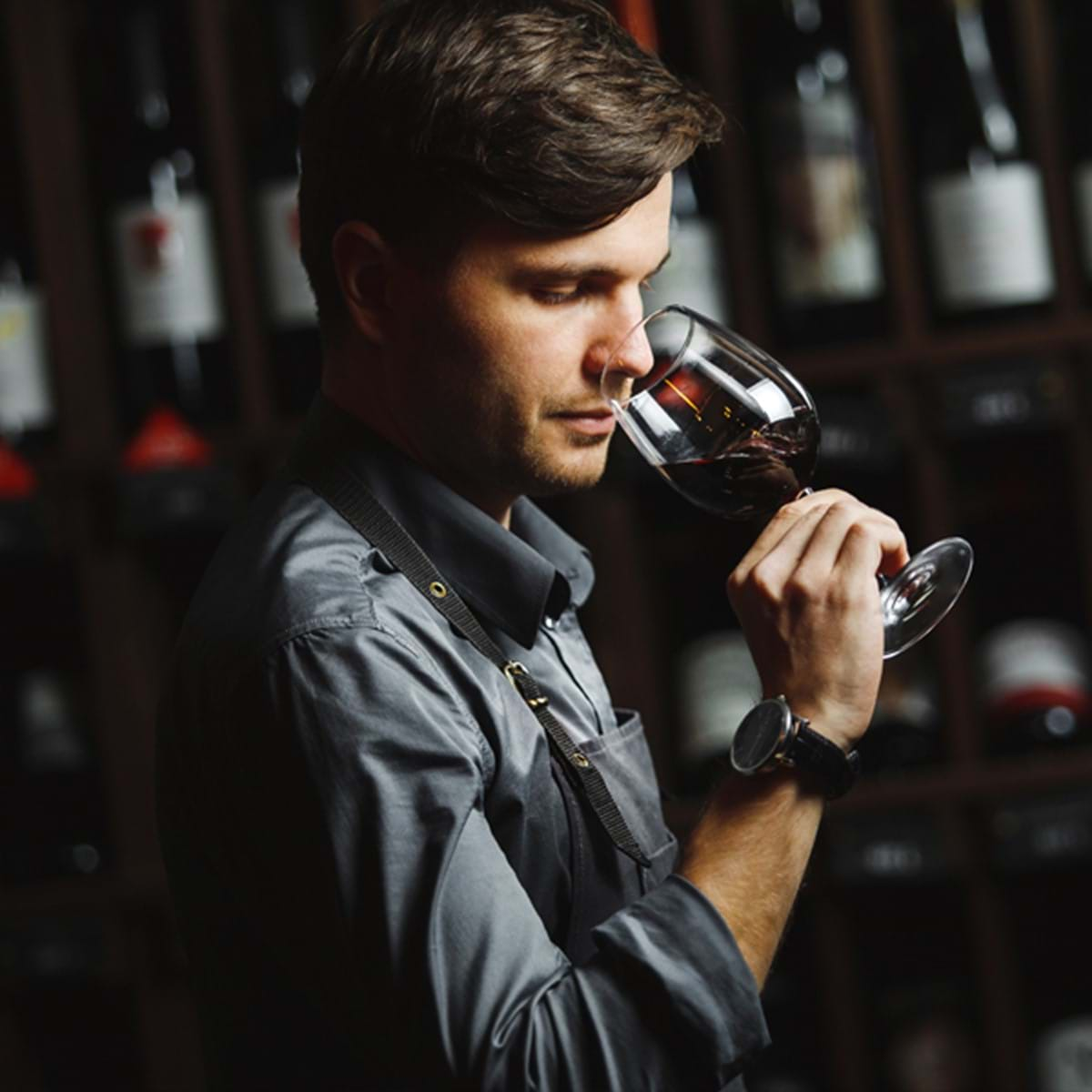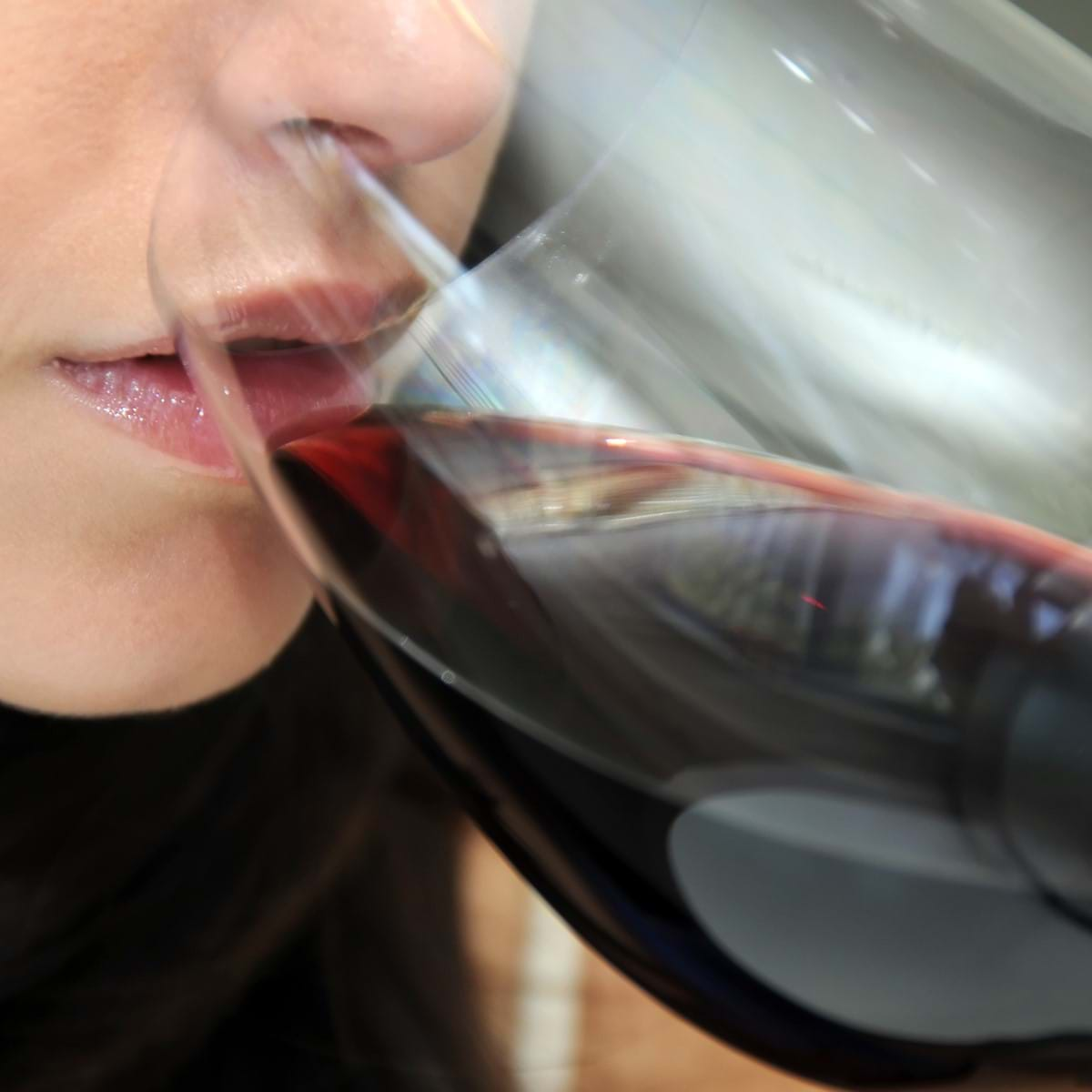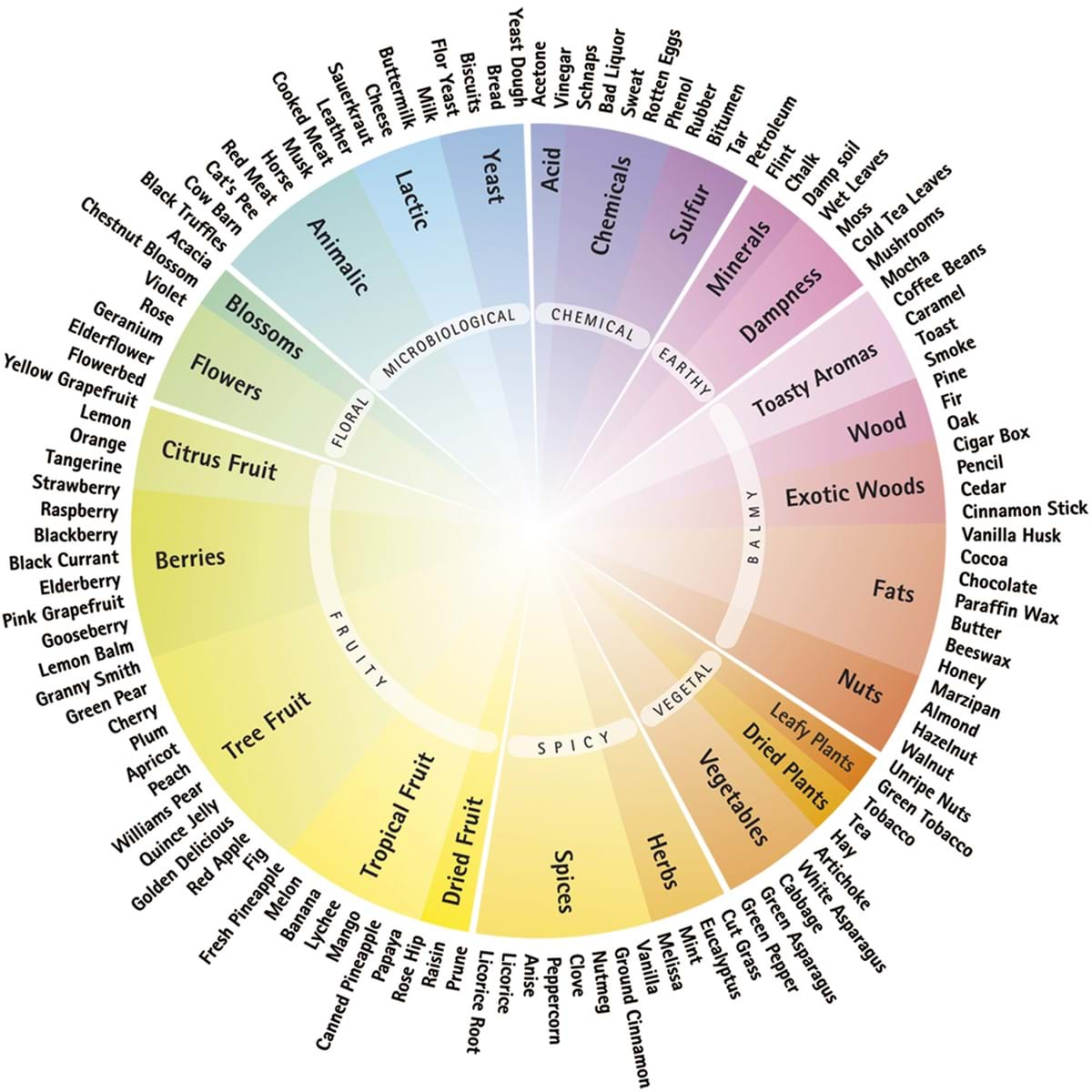Pour the wine into your wine glass, preferrably one from Riedel or Zalto which we stock here at Dunell's and highly recommend. Take a sip and keep it in your mouth. Pay attention to the wine’s initial impact, mouthfeel and finish. To intensify the tasting you can chew the wine (causing the tannins to emerge) or you can take in some air with your lips slightly open (causing sealed aromas to open up).
The aroma wheel below can help you in identifying the wine’s aromas. Should you taste a series of wines, spit the samples out (this reduces the negative effect the alcohol has on your tasting abilities). To neutralize your palate you can simply drink some water. Do not eat any bread while tasting wine since this will significantly affect your sense of taste.
Serving, Tasting & Preserving Wine
Wine Preservation » How to taste wine like a professional » Why does glass shape matter? » The Art of Decanting » Caring for your glassware » Wine Faults »Here we look at how to taste wine, the sensations you'll experience and we provide an aroma wheel to help you identify the full spectrum of aromas you can find in wine.

How to Taste Wine

There are 4 sensations in wine
1. Bouquet: Grape varietal specific stemware is responsible for delivering the quality and intensity of the wine’s aroma.
2. Texture: Grape varietal specific stemware highlightsthe exciting and diverse styles of „mouthfeel“ in wine (watery, creamy, silky, velvety).
3. Taste: Grape varietal specific stemware creates a balanced interaction between the fruit, minerality, acidity and bitter components of a wine.
4. Flavour: Grape varietal specific stemware offers a pleasant, seamless, harmonious, and long lasting aftertaste

Wheel of Aromas
Aromas imparted by the grapes...
These aromas derive directly from the grapes; immediately after bottling, they typically dominate the flavor of the young wine. Eventually, these fruit aromas give way to or are complemented by mature aromas.
Aromas imparted by bottle age...
New aroma structures develop over time as the wine matures in the bottle, thereby enriching the mature wine’s flavor. Mature aromas start to dominate after the wine has peaked and can eventually cause the wine to seem tired. Some wines do not age well and should be drunk when young.
Aromas imparted by vinification...
The winemaker can heavily influence the wine’s flavor by the use of steel tanks, wooden casks or barriques (small wood barrels). This is dependent on the intensity of the use, the age of the wine, and the level of the toasting (roasting of wood barrels over fire). Various aromas from vanilla to caramel may be imparted to the wine. Furthermore, stirring of the yeast cells may impart yeasty or buttery aromas. These vinification aromas can become either complementary or dominant in the finished wine.
(Article in association with Riedel)

